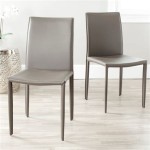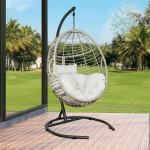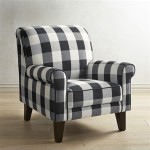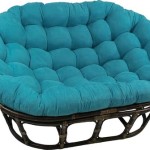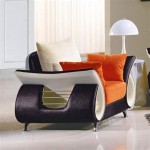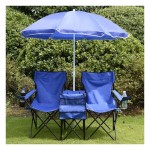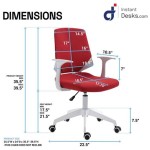Wooden Rocking Chairs For Front Porches: A Guide to Style, Comfort, and Durability
The front porch, often considered the welcoming face of a home, is an ideal space for relaxation and social interaction. Among the various furniture options available for enhancing this space, the wooden rocking chair stands out as a timeless classic. Combining aesthetics, comfort, and durability, wooden rocking chairs offer a compelling addition to any front porch. This article explores the various facets of wooden rocking chairs for front porches, examining their stylistic diversity, comfort features, and material considerations.
Stylistic Considerations for Wooden Rocking Chairs
Wooden rocking chairs are available in a wide range of styles, each offering a distinct aesthetic that can complement the architectural design of a home. The primary styles include traditional, modern, and rustic designs. Understanding the nuances of each style enables homeowners to select a rocking chair that seamlessly integrates with their existing decor.
Traditional rocking chairs often feature intricate details, such as spindle backs, curved armrests, and meticulously carved accents. These chairs evoke a sense of nostalgia and are frequently constructed from hardwoods like oak or maple, finished with a rich stain to highlight the natural grain of the wood. The classic design is characterized by its emphasis on symmetry and refined ornamentation.
Modern rocking chairs, in contrast, prioritize simplicity and clean lines. These chairs often incorporate minimalist designs with emphasis on functionality. Materials commonly used in modern designs include lighter-toned woods such as birch or ash, or even combinations of wood and metal. The aesthetic aims for a streamlined appearance, eschewing excessive ornamentation in favor of understated elegance.
Rustic rocking chairs embrace a more rugged and natural aesthetic. These chairs frequently utilize reclaimed wood or woods with visible knots and imperfections. The finish is often intentionally distressed to enhance the rustic appeal. Designs may include wider slats, chunkier frames, and a focus on showcasing the raw beauty of the wood. Rustic rocking chairs create a sense of warmth and connection to the outdoors.
Beyond these major styles, variations exist to cater to specific preferences. These include Adirondack rocking chairs, which feature a distinctive slanted back for enhanced comfort, and swivel rocking chairs, which combine the rocking motion with the ability to rotate. Understanding these stylistic options allows homeowners to make an informed decision that reflects their personal taste and complements their home's overall design.
Comfort and Ergonomics of Wooden Rocking Chairs
The comfort provided by a wooden rocking chair is a crucial factor in its appeal. Ergonomic design, seating depth, back support, and armrest placement all contribute to the overall user experience. A well-designed rocking chair promotes relaxation and reduces strain, making it a desirable addition to any front porch.
The ergonomic design focuses on aligning the body in a natural and comfortable posture. This involves considering the angle of the seat, the curvature of the backrest, and the overall dimensions of the chair. Chairs with excessive seat depth can cause discomfort for individuals with shorter legs, while chairs with inadequate back support can lead to back pain. Achieving an optimal balance in these dimensions is essential for ensuring comfortable seating.
Back support is a critical aspect of comfort. Some rocking chairs feature a contoured backrest that conforms to the natural curve of the spine, providing lumbar support and reducing pressure on the lower back. Others utilize a series of spindles that offer flexibility and airflow, preventing overheating. The choice of back support depends on individual preferences and needs.
Armrests also contribute significantly to comfort. The height and width of the armrests should be appropriate for the user's arm length and body size. Armrests that are too low can cause shoulder strain, while those that are too high can restrict movement. Additionally, the shape and padding of the armrests can affect comfort, with some chairs featuring contoured armrests for enhanced support.
The rocking motion itself also plays a role in comfort. The smoothness and range of the rocking motion should be carefully considered. Chairs with an excessively aggressive rocking motion can be unsettling, while those with insufficient motion may not provide the desired level of relaxation. The rocker design and the weight distribution of the chair influence the quality of the rocking motion.
Cushions and pillows can further enhance the comfort of a wooden rocking chair. Adding a seat cushion can provide additional padding and support, while a lumbar pillow can improve back support. The choice of cushions and pillows should be based on individual preferences and the overall aesthetic of the chair.
Material and Durability Considerations for Wooden Rocking Chairs
The choice of wood significantly impacts the durability and longevity of a wooden rocking chair. Different types of wood possess varying levels of resistance to weather, insects, and decay. Selecting a wood that is well-suited to the outdoor environment is crucial for ensuring the chair's long-term performance.
Hardwoods such as teak, oak, and mahogany are excellent choices for outdoor furniture due to their natural resistance to moisture and insects. Teak is particularly well-regarded for its durability and ability to withstand harsh weather conditions. Oak is a strong and durable wood that is resistant to rot and decay. Mahogany is a beautiful and durable wood that is often used in high-end furniture.
Softwoods such as pine and cedar are less expensive than hardwoods but are also less durable. Pine is susceptible to rot and decay if not properly treated. Cedar has natural insect-repellent properties but is still prone to damage from moisture. If using softwood, it is essential to apply a protective finish to prolong its lifespan.
The construction methods used in assembling the rocking chair also affect its durability. Chairs that are joined using mortise-and-tenon joints or dovetail joints are generally stronger and more durable than those that are joined using screws or nails. These traditional joinery techniques provide superior strength and stability.
The finish applied to the wood also plays a vital role in protecting it from the elements. A high-quality exterior finish can help to prevent moisture from penetrating the wood, which can lead to rot and decay. Finishes also protect the wood from UV radiation, which can cause fading and discoloration. Regular maintenance, such as cleaning and re-applying the finish as needed, is essential for preserving the chair's appearance and durability.
Consideration should also be given to the hardware used in the construction of the rocking chair. Stainless steel or brass hardware is recommended for outdoor use as it is resistant to corrosion. Using lower-quality hardware can lead to rust and deterioration, which can compromise the structural integrity of the chair.
The overall care and maintenance of the wooden rocking chair also contribute to its longevity. Regularly cleaning the chair with soap and water can help to remove dirt and debris that can damage the finish. Storing the chair indoors during the off-season can protect it from harsh weather conditions. Inspecting the chair regularly for signs of damage and making repairs as needed can help to prevent minor problems from becoming major issues.
By carefully considering the material, construction methods, finish, and maintenance requirements, homeowners can select a wooden rocking chair that will provide years of enjoyment on their front porch.
Additional Considerations
Beyond style, comfort, and durability, several other factors should be considered when selecting a wooden rocking chair for a front porch. These include the size and weight capacity of the chair, the availability of replacement parts, and the warranty offered by the manufacturer.
The size of the rocking chair should be appropriate for the space available on the front porch. A chair that is too large can overwhelm the space, while a chair that is too small may not be comfortable. It is also essential to consider the weight capacity of the chair to ensure that it can safely accommodate the intended user.
The availability of replacement parts can be a crucial factor, particularly for chairs that are used frequently or subjected to harsh weather conditions. Being able to easily obtain replacement rockers, spindles, or other components can extend the life of the chair and prevent the need for costly repairs.
The warranty offered by the manufacturer provides assurance that the chair is free from defects in materials and workmanship. A comprehensive warranty can protect against unexpected repairs or replacements and provide peace of mind. It is essential to carefully review the terms and conditions of the warranty before making a purchase.

Lue Bona Orson White Acacia Wood Classic Adirondack Weather Resistant Outdoor Porch Rocker Rocking Chair Set Of 2 2dpthd23028 3 The Home

Teak Porch Rocking Chair Set For Outdoors

Shine Company 4333oa Rhode Island Porch Rocker Oak

10 Outdoor Rocking Chairs For Any Home

2 In 1 Adirondack Rocking Chair Porch Rocker Outdoor Chairs Lue Bona

Mainstays Outdoor Wood Porch Rocking Chair Natural Walmart Com

Polywood Vineyard Porch Outdoor Rocking Chair

Seagrass High Tide Poly Porch Rocker Set

Polywood Braxton Set Of 3 Porch Rockers Pw Set1

Jonathan Y Seagrove Farmhouse Classic Slat Back 350 Lbs Support Acacia Wood Outdoor Rocking Chair White Rck300c
